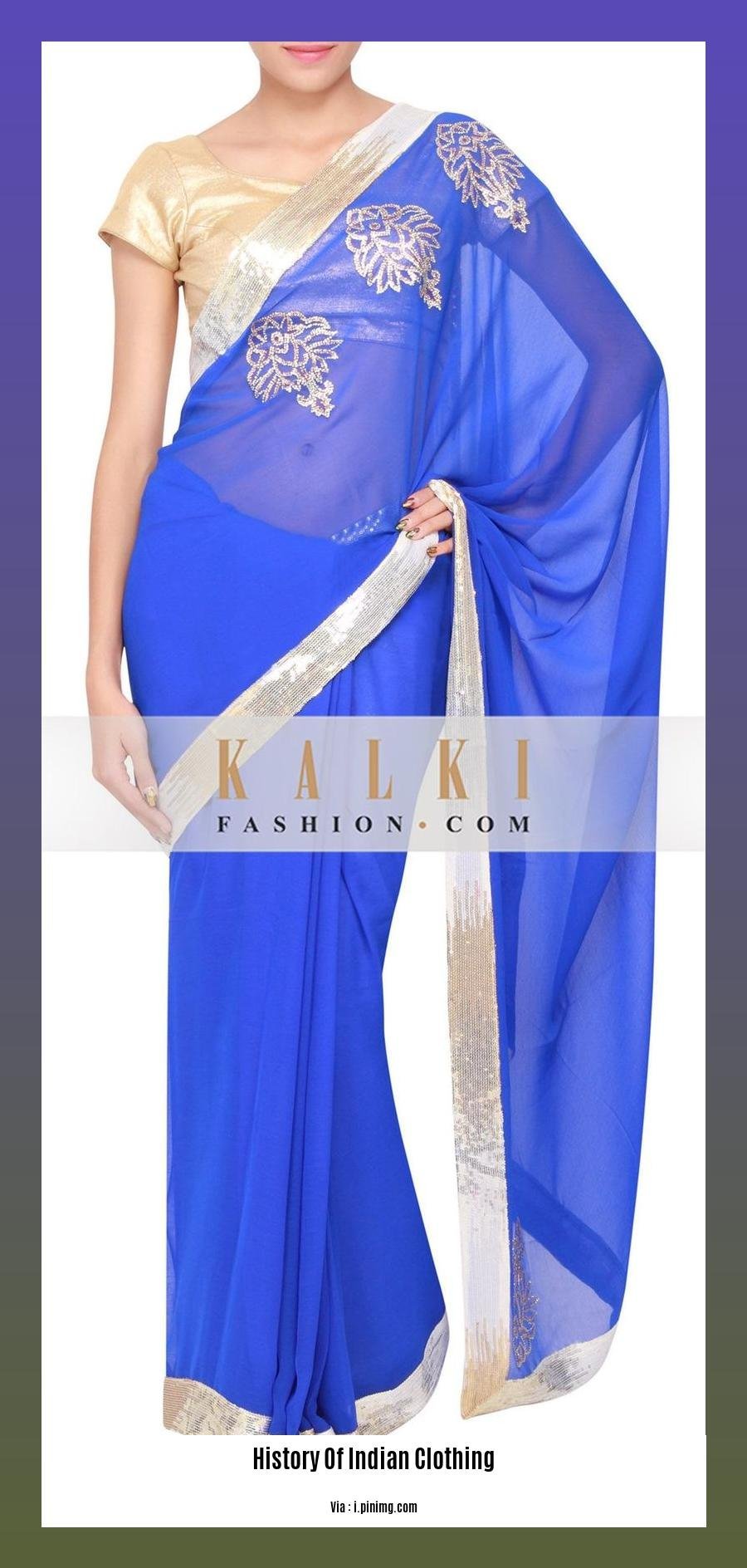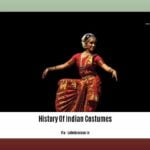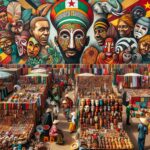Embark on an enthralling journey through the vibrant history of Indian clothing in our article, “Unveiling the Timeless Splendor: A Journey Through the History of Indian Clothing.” Discover the rich tapestry of traditional attire, from the flowing grace of the sari to the intricate embroidery of the sherwani, as we delve into the cultural influences, historical events, and personal anecdotes that have shaped the evolution of Indian fashion.
Key Takeaways
The history of Indian clothing can be traced back to the 5th millennium BCE.
During the Mauryan and Sunga period (321-72 BCE), people wore three unstitched garments: the antariya, muraja, and uttariya.
The antariya was the main garment made from white cotton, linen, or muslin.
Weaving was well-established in ancient India, with textiles made from both fine and coarse varieties of cloth.
The Satavahana, Kushan, and Gupta periods witnessed further advancements in Indian clothing.
The saree, a symbol of India, is the traditional dress for women, and a modern attire as well.
History of Indian Clothing
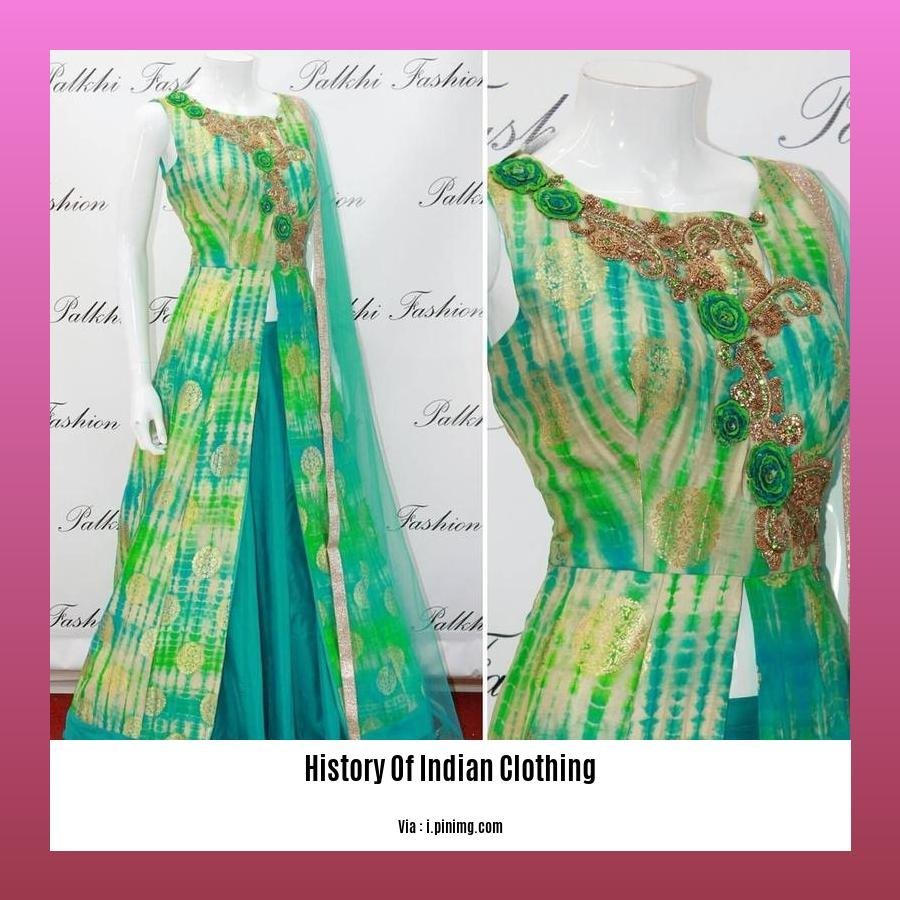
India, a land steeped in rich cultural heritage, boasts a vibrant tapestry of traditional clothing that has evolved over millennia. Embark on a captivating journey as we delve into the **history of Indian clothing**, exploring the fascinating influences that have shaped its unique identity.
Indus Valley Civilization: The Genesis of Indian Fashion
The roots of Indian fashion can be traced back to the Indus Valley Civilization, one of the world’s earliest and most advanced civilizations. Archaeological excavations at sites like Mohenjo-daro and Harappa have unearthed evidence of cotton cultivation and weaving, suggesting that the inhabitants of this ancient civilization possessed sophisticated textile skills.
Women of the Indus Valley Civilization adorned themselves in skirts, shawls, and elaborate headdresses, while men wore loincloths and turbans. These early garments were often adorned with intricate embroidery and beadwork, showcasing the creativity and craftsmanship of the artisans.
Vedic Period: The Emergence of the Dhoti and Sari
During the Vedic period (1500-500 BCE), Indian clothing underwent significant transformations. The dhoti, a traditional garment for men, made its appearance, consisting of a long piece of cloth wrapped around the waist and legs.
Meanwhile, women began to drape themselves in the sari, an iconic symbol of Indian fashion. The sari, a versatile garment made from a single piece of fabric, could be worn in various styles and was often adorned with vibrant colors and patterns.
Mauryan and Sunga Period: Royal Attire and Fine Textiles
The Mauryan and Sunga period (321-72 BCE) witnessed the rise of powerful empires, leading to advancements in textile production and royal attire. Both men and women wore three unstitched garments: the antariya, muraja, and uttariya.
The antariya, the main garment, was made from white cotton, linen, or muslin and often featured intricate embroidery. The muraja, a veil-like garment, was draped over the head and shoulders, while the uttariya, a shawl, was worn around the waist or shoulders.
Satavahana, Kushan, and Gupta Periods: Cultural Fusion and Textile Innovations
The Satavahana, Kushan, and Gupta periods (2nd century BCE to 6th century CE) marked a period of cultural fusion and textile innovations. Trade with neighboring regions introduced new influences into Indian fashion.
The Kushans introduced trousers and tunics from Central Asia, while the Guptas patronized the production of fine silks and muslin. These periods also witnessed the rise of elaborate jewelry and accessories, adding to the opulence of Indian attire.
Medieval Period: The Mughal Influence and Regional Diversity
The medieval period (7th to 18th century) saw the rise of the Mughal Empire, which brought significant changes to Indian clothing. Mughal rulers introduced Persian and Central Asian influences, leading to the adoption of long, flowing garments and luxurious fabrics like silk and velvet.
Regional diversity also flourished during this period, with each region developing its unique styles and textiles. In Rajasthan, for example, women wore colorful ghagra cholis, while in Gujarat, the salwar kameez gained popularity.
Colonial Period: The Impact of Western Fashion
The colonial period (18th to 20th century) marked a significant turning point in the **history of Indian clothing**. The British introduced Western styles and fabrics, leading to a gradual shift in dressing habits.
While traditional attire remained popular in rural areas, urban Indians began to adopt Western clothing, particularly for formal occasions. This period also saw the rise of the khadi movement, led by Mahatma Gandhi, which promoted the use of hand-spun and hand-woven fabrics as a symbol of national pride.
Contemporary Indian Fashion: A Blend of Tradition and Modernity
In contemporary India, fashion has evolved into a vibrant blend of tradition and modernity. Designers draw inspiration from India’s rich textile heritage while incorporating global trends and contemporary silhouettes.
Traditional garments like the sari and salwar kameez coexist with Western-style clothing, creating a diverse and dynamic fashion landscape. The use of sustainable materials and ethical production practices is also gaining traction, reflecting a growing awareness of environmental and social responsibility within the Indian fashion industry.
The origins and evolution of Ibadan, Nigeria’s largest city, is an intriguing journey through time. History of Ibadan
Evolution of the spectacular and unique fashion culture in India can be explored through its vibrant costumes. History of Indian Costumes
Indian Motorcycle Company, an iconic American brand, has a rich history that has shaped the world of motorcycling. History of Indian Motorcycle Company
Explore the intriguing tapestry of the Indian Orthodox Church, a prominent Christian denomination with roots in India. History of Indian Orthodox Church
The Victorian Age: Understanding the influence of British rule on Indian fashion and the emergence of the sari as a symbol of national identity
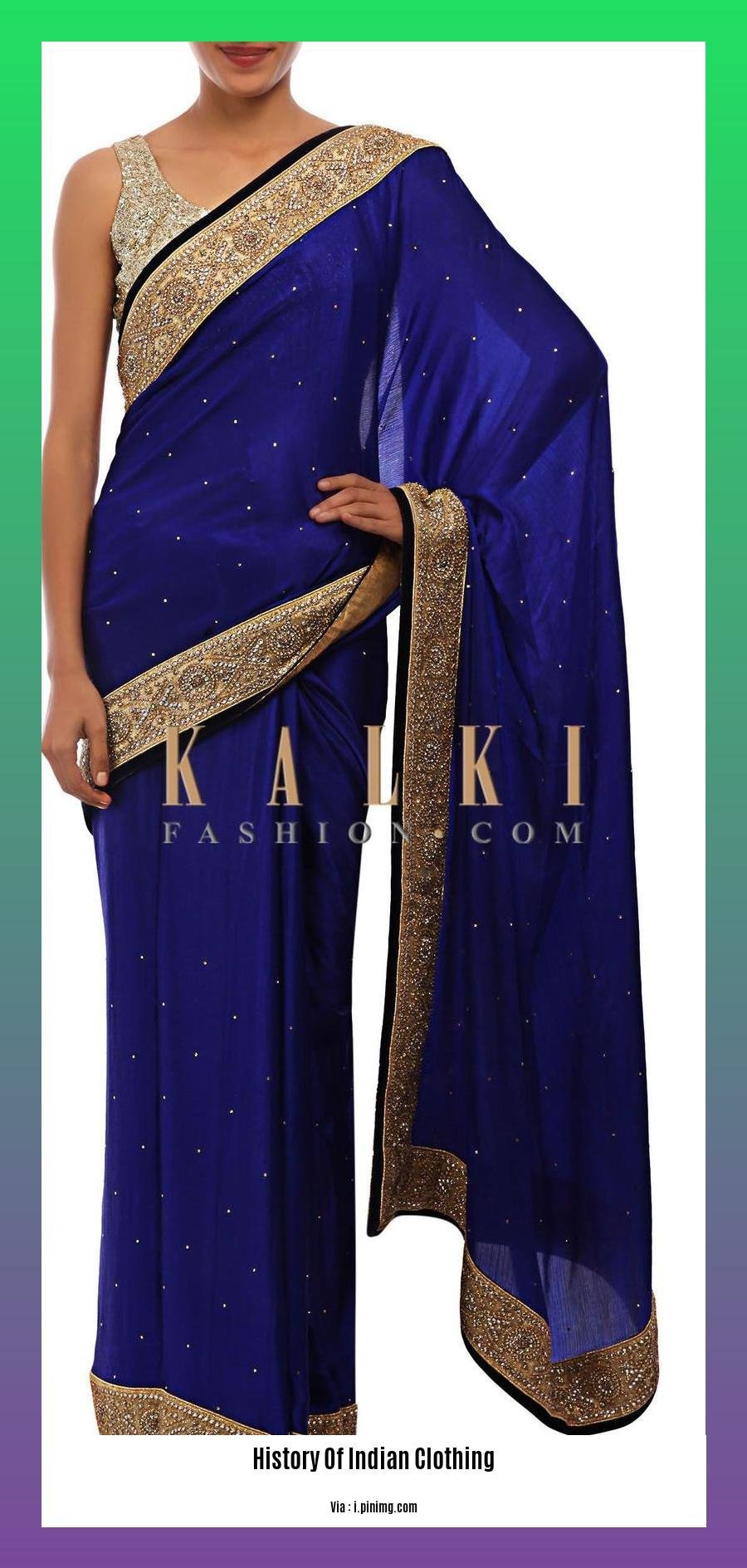
Fashion is not just about clothing; it’s a mirror reflecting society’s cultural and historical evolution. In the case of India, it’s a vibrant tapestry woven with threads of diverse traditions, each telling a unique story. Today, we’re diving into a chapter of Indian fashion profoundly shaped by British rule: The Victorian Age.
During this era, India witnessed a fascinating interplay of cultures that left an indelible mark on its sartorial landscape.
British Influence on Indian Fashion
The Victorian era brought a wave of Western influences to India, leading to the adoption of British styles and fabrics.
- Textiles and Fabrics: Indian cotton and silk became favorites in British wardrobes, while India embraced British-style tailoring and silhouette.
- Styles and Designs: Victorian fashion trends, like bustles, crinolines, and tailored suits, found their way into Indian couture.
- Accessories: Western accessories like handbags, gloves, and hats gained popularity, blending seamlessly with traditional Indian jewelry.
The Emergence of the Sari as a Symbol of National Identity
Amidst the influx of Western styles, the sari emerged as a powerful symbol of Indian identity. This unstitched drape transformed from everyday wear to a symbol of cultural pride, representing resistance to colonial rule.
- Reclaiming Tradition: The sari became a symbol of defiance against the British, who often imposed their own dress codes.
- Nationalist Movement: Indian women embraced the sari as a symbol of their heritage and unity during the Indian National Movement.
- Global Recognition: The sari gained international recognition as a symbol of Indian culture, making it an iconic garment worldwide.
Key Takeaways:
- Cultural Fusion: The Victorian Age witnessed a unique fusion of Indian and British fashion elements, creating a blend of Eastern and Western styles.
- Sari as National Symbol: The sari emerged as a symbol of Indian identity, representing cultural pride and resistance against British rule.
- Global Influence: Indian fashion gained international recognition during the Victorian era, with the sari becoming an iconic symbol of Indian culture.
Sources:
- Cricket, Curry and Cups of Tea: India’s Influence on Victorian Britain
- The Influence of British Raj on Indian Fashion
The Post-Independence Era: Witnessing the revival of traditional textiles and the emergence of modern designers who blend heritage with contemporary aesthetics
Dear fashion explorers!
Picture this—a symphony of colors, a dance of fabrics, and a fusion of cultures that defined the post-independence era of Indian fashion. This was a time of resurgence, as traditional textiles and artisanal skills found their way back into the spotlight, blending effortlessly with contemporary styles.
The Revival of Traditional Textiles
The post-independence era marked a conscious effort to revive and celebrate India’s rich textile heritage. The government played a crucial role by launching initiatives like the Comprehensive Handloom Cluster Development Scheme (CHCDS). This initiative aimed to create ‘mega handloom clusters’ that integrated all necessary supply chain elements, ensuring fair wages and market linkages for artisans.
Designers like Ritu Kumar emerged as pioneers of this revival. She saw the immense potential of traditional Indian textiles and showcased them on global platforms, injecting fresh energy into the fashion scene. This revival extended beyond runway shows, creating a sustainable ecosystem that bridged the gap between weavers and consumers.
Modern Designers: Blending Heritage with Contemporary Aesthetics
The post-independence era also witnessed the rise of modern Indian designers who masterfully blended traditional textiles and motifs with contemporary silhouettes and designs. They brought a breath of fresh air to the fashion industry, staying true to their cultural roots while experimenting with innovative styles.
Designers like Manish Malhotra and Sabyasachi Mukherjee became household names, showcasing their collections at prestigious fashion weeks and dressing celebrities worldwide. Their designs struck a chord with the younger generation, who embraced the fusion of tradition and modernity.
Key Takeaways:
The post-independence era witnessed a revival of traditional textiles in India.
Initiatives like the Comprehensive Handloom Cluster Development Scheme supported artisans and promoted sustainable practices.
Designers like Ritu Kumar played a pivotal role in showcasing traditional Indian textiles on global platforms.
Modern designers skillfully blended heritage with contemporary aesthetics, creating a new wave of fusion fashion.
Designers like Manish Malhotra and Sabyasachi Mukherjee popularized Indian fashion globally.
Citations:
Revival of the Indian Traditional Textile Industry: An Overview
Ritu Kumar: A Pioneer in Blending Traditions
Celebrating Diversity: Exploring the vibrant regional variations in Indian clothing and the unique styles that define each region
From the graceful drapes of the sari to the majestic elegance of the sherwani, each piece of clothing holds a story that binds it to the land and its people. Let’s embark on a sartorial journey through India’s diverse regional styles:
Regional Styles: A Legacy of Cultural Expression
The North’s rich heritage is woven into its clothing. The graceful salwar kameez, with its flowing silhouettes, epitomizes Punjabi elegance. Kashmir’s exquisite pashmina shawls whisper tales of warmth amidst the snowy peaks. Rajasthan’s vibrant leheriya, with its rainbow-like hues, captures the desert’s energy.
In the West, grace meets grandeur. Gujurat’s Chaniya choli, adorned with intricate embroidery and mirror work, is a masterpiece of craftsmanship. Maharashtra’s nauvari sari, with its unique nine-yard drape, exudes sophistication.
The East’s serene elegance is reflected in its attire. West Bengal’s beautiful silk saris, adorned with intricate motifs, embody grace and refinement. Odisha’s ikat weaves, with their vibrant patterns, pay homage to the state’s glorious handloom tradition.
The South’s regal charm is a blend of tradition and artistry. Kerala’s graceful mundum neriyathum, featuring a white mundu and golden kasavu border, epitomizes simplicity. Tamil Nadu’s Kanchipuram silk saris, with their shimmering gold threads, evoke grandeur.
Cultural Influences: A Tapestry of Styles
Each region’s textiles carry unique cultural influences. Kashmir’s pashmina shawls, crafted from the softest underfur of the Changthangi goats, are a product of the harsh Himalayan environment. West Bengal’s silk saris draw inspiration from the state’s rich artistic heritage, particularly the Murshidabad silk tradition. Kerala’s mundum neriyathum is rooted in the state’s traditional beliefs and customs, symbolizing purity and auspiciousness.
Embracing Regional Diversity: A Celebration of India’s Heritage
India’s vibrant regional variations in clothing are a testament to the country’s cultural diversity and rich heritage. Embracing this diversity means celebrating the unique traditions, artistry, and craftsmanship that make each region special. It’s an opportunity to appreciate the diversity of the land and the people, weaving together a tapestry of colors, patterns, and styles, each with its own tale to tell.
Key Takeaways:
- India’s traditional clothing showcases a rich tapestry of styles, each representing a distinct region.
- Regional diversity reflects the influence of geography, culture, and heritage on clothing styles.
- Embracing regional diversity celebrates India’s cultural pluralism and promotes appreciation for its rich textile traditions.
Sources:
- The Regional Diversity of Indian Clothing
- Influence of Geography on Indian Clothing
FAQ
Q1: What are the origins of Indian clothing?
A1: The history of Indian clothing can be traced back to the 5th millennium BC, with evidence suggesting the use of unstitched garments made from natural materials like cotton and linen.
Q2: What were the primary garments worn during the Mauryan and Sunga period?
A2: During the Mauryan and Sunga period (321-72 BCE), both men and women commonly wore three unstitched garments: the antariya, muraja, and uttariya. The antariya, made from white cotton, linen, or muslin, served as the main garment.
Q3: How did weaving evolve during the Satavahana, Kushan, and Gupta periods?
A3: The Satavahana, Kushan, and Gupta periods witnessed significant advancements in weaving techniques. Textiles were crafted using both fine and coarse varieties of cloth, showcasing the diverse range of fabrics available during this era.
Q4: What is the significance of the saree in Indian culture?
A4: The saree holds a prominent position as a traditional dress for women in India. It is a symbol of grace and femininity, elegantly draped around the body. The saree comes in various fabrics, colors, and designs, reflecting the diverse regional styles across the country.
Q5: Apart from the saree, what other traditional garments are popular in India?
A5: Alongside the saree, India is home to a range of traditional garments that vary across different regions. These include the dhoti, a loose-fitting cloth worn around the waist by men, and the kurta, a long tunic or shirt worn by both men and women. Each of these garments carries cultural and historical significance, representing the rich diversity of Indian attire.
- Discover the Borough of Frenchtown, NJ: A Delaware River Town Blending History, Art & Nature - November 22, 2024
- Discover Clarks Grove, MN: A Small Town with a Big Heart - November 22, 2024
- Califon Borough, NJ: A Small Town with a Big Heart (and Rich History) - November 22, 2024
